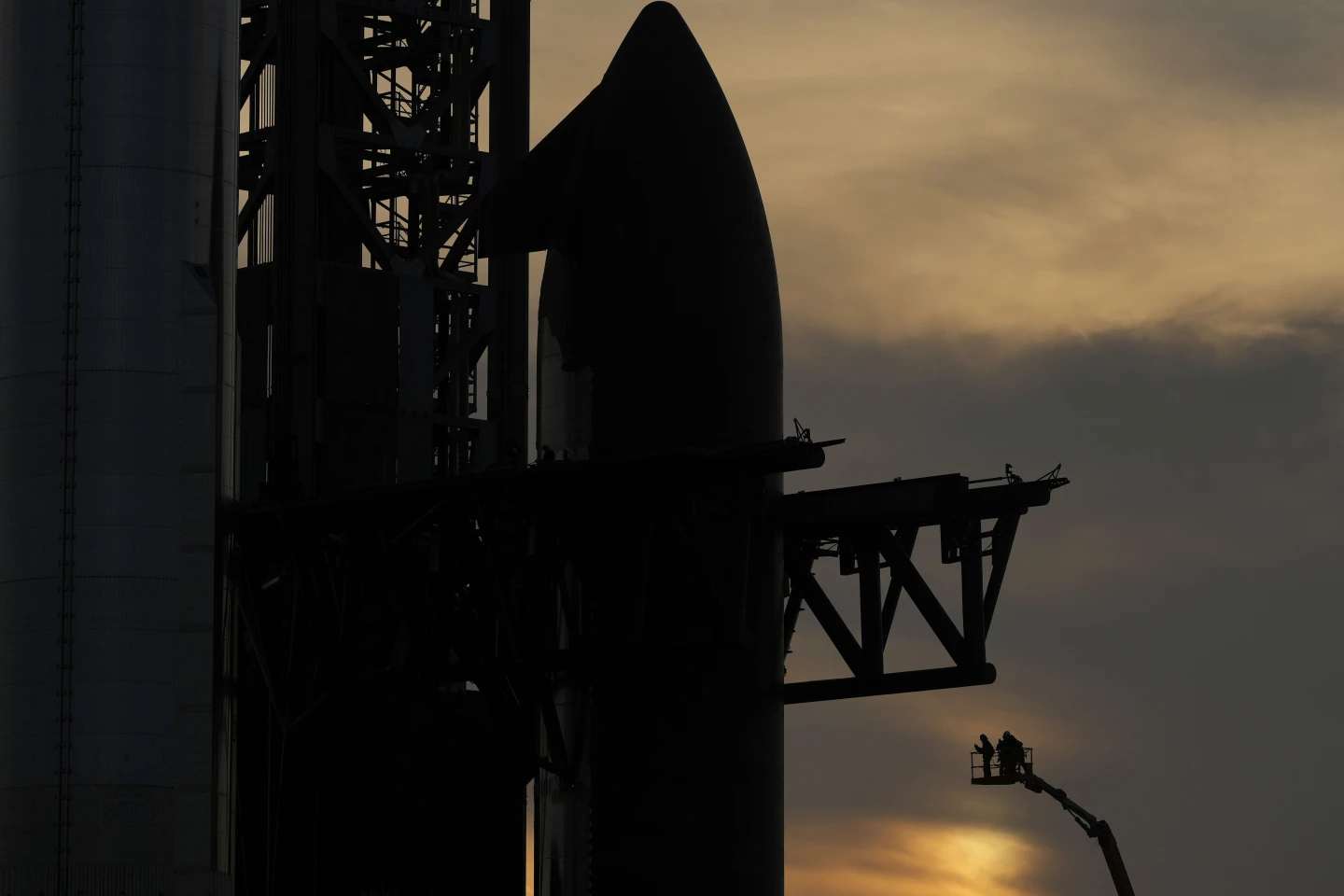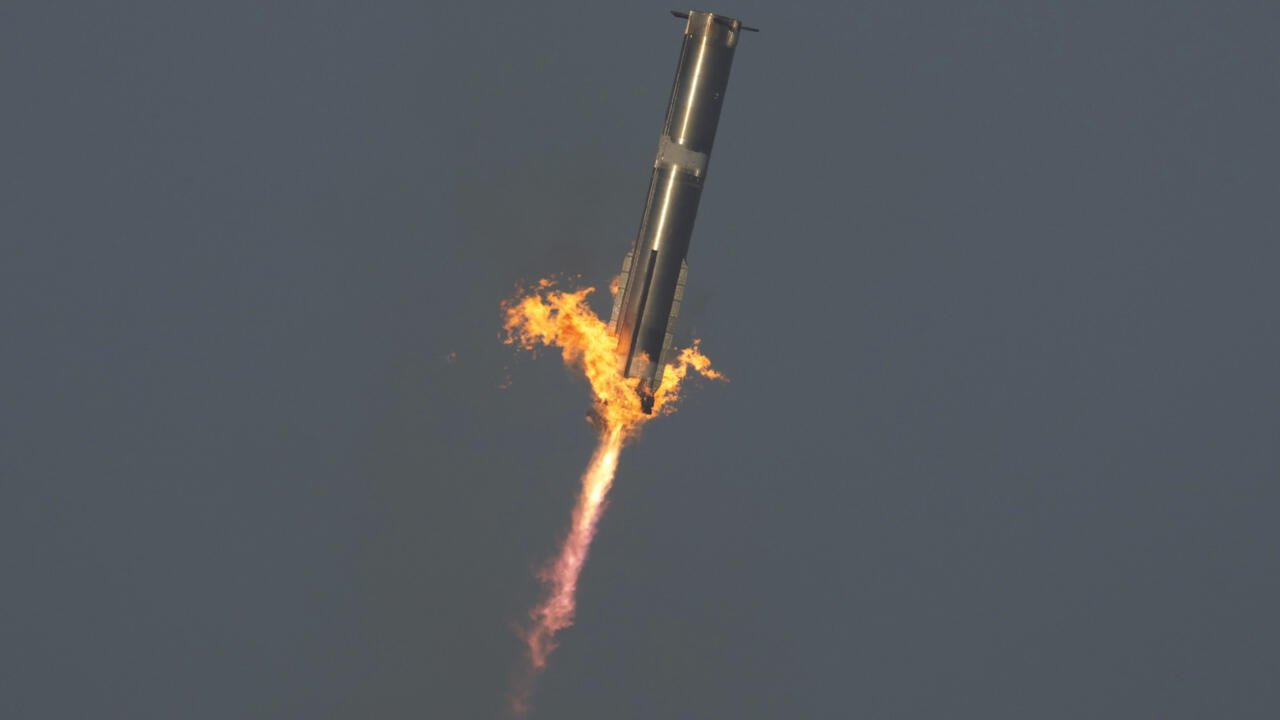SpaceX’s Starship Explodes Midflight Again, Shocking Setback Disrupts Florida Air Traffic 2025

SpaceX’s Starship spacecraft has exploded for the second time in 2025 during its eighth test flight, marking another setback in the ambitious project. The uncrewed mission, which launched from SpaceX’s Starbase facility in South Texas, experienced catastrophic failure less than 10 minutes into its flight, disrupting air traffic and raising concerns over the company’s ongoing efforts.
A Bumpy Launch
The spacecraft, riding atop the massive 232-foot Super Heavy rocket booster, lifted off at 5:30 p.m. CT (6:30 p.m. ET) on Thursday. The mission appeared to be progressing smoothly as the Super Heavy booster separated from the Starship upper stage after about 2.5 minutes. The booster successfully landed, making this the third time SpaceX has completed the “chopstick” catch using its Mechazilla launch tower near Brownsville, Texas.
However, the Starship spacecraft, continuing its journey toward space, soon began to face issues. During the live broadcast, viewers watched as several of the spacecraft’s engines cut out, causing the vehicle to spin uncontrollably. SpaceX lost communication with Starship shortly thereafter.
Dan Huot, SpaceX’s communications manager, commented on the livestream, stating, “Once you lose enough of those center engines, you’re going to lose attitude control.” He added, “We did see the ship start to go into a spin, and at this point, we have lost contact with the ship.”
The failure occurred roughly at the same point as the January mishap during Starship’s seventh test flight, which also ended in an explosion. On that occasion, debris rained down over populated islands in the Turks and Caicos.
Explosion and Air Traffic Disruption
The explosion from Thursday’s Starship flight was visible from various locations, including parts of Florida and the Caribbean. This prompted the Federal Aviation Administration (FAA) to halt flights into several Florida airports, including Miami, Fort Lauderdale, Palm Beach, and Orlando, due to falling space debris. The FAA temporarily restricted flights from departing from Fort Lauderdale/Hollywood International Airport and Miami International Airport, resulting in delays of up to 45 minutes.
Footage from Marathon, Florida, captured the fireball from the explosion as it broke apart midair. SpaceX responded to the situation by reassuring the public that safety measures were in place, including debris response areas coordinated with air traffic control.
“We have a lot of measures put in place before we ever launch a rocket to make sure that we’re keeping the public safe. Those worked last time and they’re actively in work right now,” said Huot on the livestream.
SpaceX’s Statement and FAA’s Involvement
Hours after the explosion, SpaceX provided an update, confirming that the energetic event that led to the loss of Starship occurred in the aft portion of the vehicle. This caused the failure of several Raptor engines, resulting in a loss of attitude control and ultimately communication with the spacecraft. SpaceX assured the public that any surviving debris would have fallen within pre-designated “Debris Response Areas,” and there were no toxic materials present.
The FAA, which is responsible for regulating commercial rocket launches, has launched an investigation into the mishap. A statement from the agency clarified that SpaceX must complete a mishap investigation to improve public safety and determine the cause of the failure. The FAA will monitor every step of this investigation and approve the final report, which could include corrective actions to prevent similar incidents.
“Return to flight is based on the FAA determining that any system, process, or procedure related to the mishap does not affect public safety,” the statement said.
A Bumpy Start to 2025 for Starship
Thursday’s launch was SpaceX’s second attempt at Flight 8, after a Monday attempt was postponed due to “too many question marks,” according to CEO Elon Musk. The mishap follows the explosive failure of Starship’s seventh test flight on January 16, which saw debris falling on the islands of Turks and Caicos. The FAA is still overseeing an investigation into that event.
Despite these setbacks, SpaceX has continued with its aggressive test schedule for Starship, a critical component of its long-term vision for deep space missions, including a potential lunar landing. However, the continued failures raise questions about the timeline for the spacecraft’s development and the company’s ability to manage the associated risks.
In its investigation of the January failure, the FAA found that the root cause of the explosion was likely a leak near the rear section of the vehicle, which involved superchilled liquid oxygen, a key propellant for Starship. The agency had previously required SpaceX to implement specific safety measures before each test flight.
Moving Forward
As SpaceX navigates the challenges posed by these mishaps, the FAA will continue to oversee the company’s efforts to ensure safety during its tests. While Starship’s explosive failures raise questions, the company remains determined to push forward with its ambitious plans. As investigations continue, the space community and the public will be watching closely to see how SpaceX handles these setbacks and what corrective measures are implemented for future flights.
For now, the explosion serves as a reminder of the inherent risks in the pursuit of space exploration and the need for rigorous safety protocols, especially when testing a vehicle designed for missions beyond Earth’s orbit.
